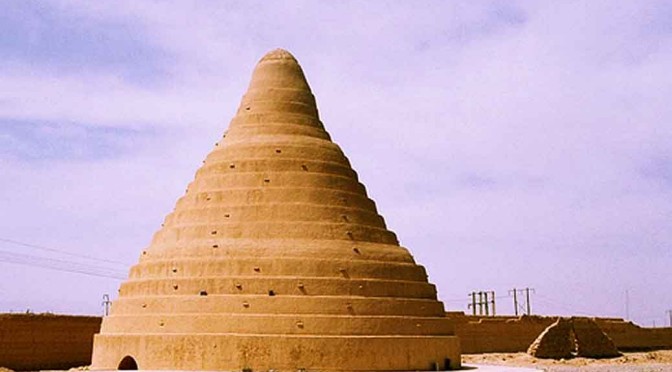By Anupum Pant
![]()
During a period when electricity was only a thing for the Gods, around 400 B.C.E., in the hot-arid deserts of Iran where temperatures touched 40 degree centigrade, ancient engineers had found a way to keep their ice from melting. Two thousand years back, a cold storage facility was being used. The impressive thing about it – it was clean and sustainable technology.
What are these?
Yakhchals, or ice pits of ancient Persia were the huge mounds (buildings hollow from the inside), which made it possible for Persians to store away the ice for summers, meat, dairy products, other food items and chilled frozen Faloodeh for the palace. Beside treats for the palace, the method of preserving ice was so professional yet simple that even the poor could afford it.
Structure and Working
The structure of these buildings above the ground is a large mud brick dome, often rising to about 60 feet in height. Below it are large underground empty spaces, up to 5000 cubic meter in volume. This space had access to wind catch and often contained a system of wind-catchers that could easily bring temperatures inside the space down to frigid levels in summer days. The structures were built so well that many still remain standing.
Working: The massive insulation built into the walls (due to the use of a special mixture of sand, clay, egg whites, lime, goat hair, and ash) and the continuous cooling waters that spiralled down its side kept the ice frozen throughout the summer by evaporative cooling (just like those mist fans). They also had a trench at the bottom to catch water from the molten ice and to refreeze it during the cold desert nights. The ice was then broken up and moved to rooms deep in the ground. As more water ran into the trench the process was repeated.
Geography: These were built in the areas that had suitable condition for producing natural ice or places where there was feasibility of water freezing during the cold nights.
- Shading wall – To avoid direct exposure to sunlight and to let the structure remain cool in the shade.
- Provisional pool – To supply water for evaporative cooling to take place.
- and Ice reservoir – To keep the cycle going. Freeze > Melt > Refreeze at night and so on…
The end of Yakhchal (reasons)
- Since the advent of electricity-guzzling freezers and air conditioners, unfortunately, the use of these architectural wonders has been considered as foolishness. This is probably the reason no Yakhchals are being used for cold storage anymore.
- Desert storms, caused a lot of erosion to these structures, especially to the ones that were isolated in the desert regions.
- Since Yakhchal’s ice formed in the open it was prone to combining with dust and resulted in contamination. That was another reason it wasn’t considered as a choice useful enough for modern purposes.
Hit the like button if you learnt something from this article.
